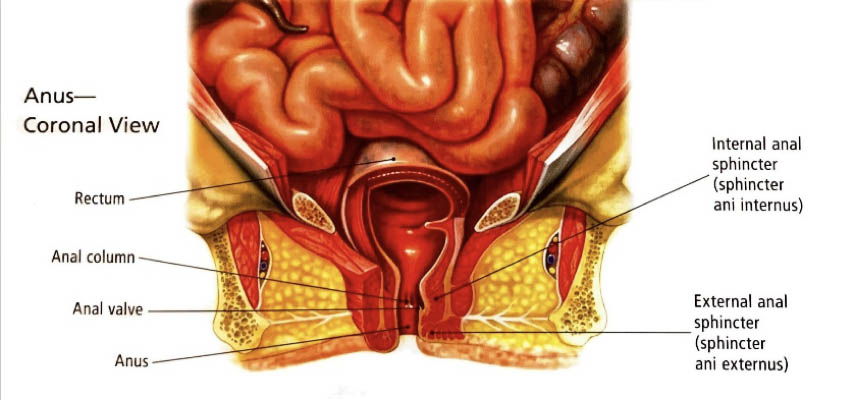By: Prof. Dr. Seyed Saeid Zamanieh Shahri, MD and Prof. Dr. Sonia Sayyedalhosseini, MD
Colorectal cancer (Part I):
The digestive system consists of esophagus, stomach, small intestine and large intestine. The large intestine starts from the end of the small intestine and ends at the anus. The anus is the opening of the large intestine that leads to the outside of the body. Colon is another name for large intestine. Cancer occurs when malignant or cancerous cells form in the colon. Colon cancer is also known as colon and rectal cancer, or colorectal cancer.
Anatomy and physiology of the colon:
The large intestine or colon is a part of the digestive tract that is located between the small intestine and the rectum and includes the cecum and hindgut or colon and rectum. The length of the large intestine is about one and a half meters, and the water in the food, as well as part of the water we drink, is reabsorbed in the large intestine, causing the stool to change from liquid to solid. Because the main function of the large intestine is to guide undigested materials to the outside of the body and does not play an important role in absorption, the large intestine does not have folds and villi. (Small intestines play an important role in absorption, that’s why it does have folds and villi).
The large intestine is the place of growth of many bacteria that live in the form of normal intestinal flora, and most of the fecal gas is the result of their activity.
Cells in the lining of the colon secrete mucus to help expel substances by making the mucous surface slippery. When the stool reaches the rectum, due to the reaction contractions that occur in the rectum and relaxes the muscles that close the valve or the anal sphincter, as a result, the person feels the urge to pass stool. Anal sphincters are ring-shaped muscles that control the opening and closing of the anus. It usually takes about one to three days for food to reach the anus from the mouth.
Overview of the large intestine:
– Folds and villi are not seen in the large intestine.
– The large intestine is 1.4 to 1.8 meters long, starting from the end of the small intestine and ending at the anus.
– The beginning of the large intestine, which is connected to the ileum, is called the cecum.
– The part of the large intestine that is located between the cecum and the anal canal is called the colon, which is divided into three parts: the favorable colon, the horizontal colon, and the descending colon. The descending colon ends with the sigmoid and rectum and finally the anal canal.
The large intestine is mainly responsible for removing water from the intestinal contents and preparing wastes to leave the body; Therefore, the most important functions of this part of the digestive system can be defined as follows:
• It absorbs water. Within 24 hours after eating food, food passes from the small intestine to the large intestine. At this stage, most of the digestive process is complete. One of the primary functions of the large intestine is to absorb water and convert waste into solid stool and expel it from the body.
• Absorbs vitamins. Some of the beneficial bacteria that normally live in the large intestine play an important role in breaking down undigested sugars and fibers into fatty acids. These commensal bacteria also produce gas consisting of methane, hydrogen sulfide, carbon dioxide, and other gases. As a result, the bad smell associated with intestinal gas is the result of the breakdown of sugars by intestinal bacteria. Beneficial bacteria also absorb many beneficial vitamins for the body, such as vitamin K and biotin.
• It reduces acidity and protects the body from infection. Fatty acids produced by bacteria in the large intestine create an acidic environment in the intestine. The large intestine produces an alkaline solution that reduces this acidity and balances the acidity in this part of the digestive system. In addition, the mucous coating of the large intestine acts as a protective layer and prevents the absorption of harmful bacteria into the body. This factor makes the possibility of causing infections from harmful bacteria to zero, under normal conditions.
• It produces important antibodies. One of the lesser-known functions of this part of the digestive system is the production of antibodies that strengthen the body’s immune system. Some doctors believe that the appendix may be one of the main producers of antibodies at some stage of the digestive process.
Causes of colon cancer:
In most cases, colon cancer originates from intestinal polyps, which usually do not cause any specific clinical symptoms in the body, but turn into cancer over time.
Colon polyps are lumps of flesh that originate from the inner lining of the colon. A person with an intestinal polyp may not have any symptoms or discomfort. But these polyps may turn into cancer if not treated. Colon cancer almost always originates from polyps or premalignant lesions of the intestine. Therefore, polyps should be removed from the colon to prevent cancer. Intestinal polyps are usually seen at all ages, but they are more common in people over 50 years old and can be more dangerous. Also, according to statistics, almost half of people over 70 may have premalignant colon polyps. Of course, many factors play a role in the risk and malignancy of polyps. For example, the larger the size of the polyps and their number, the higher the risk of malignancy.
Symptoms of colon cancer:
You must remember that polyps and even colon cancer in the early stages of their occurrence may not cause any serious symptoms or alarming signs and the disease progresses silently. Of course, there are symptoms that may be caused by colon cancer. If any of them is seen, must see a doctor. These symptoms may include but not limited to the following: (any of the below symptoms can be related to different spectrum of conditions from benign to malignant. So, having or not having the following symptoms can’t rule in nor rule out malignancy).
۱٫ Bleeding from the anus: Blood in the stool can turn the color of the stool black or appear as red streaks on the surface of the stool.
۲٫ A change in bowel habits that persists for more than 6 weeks.
۳٫ Constipation or diarrhea that occurs after the age of 40 and persists.
۴٫ Weight loss due to unknown reasons at any age.
۵٫ Iron deficiency Anemia due to unknown reasons.
۶٫ Vague and persistent pain and twisting in the lower abdomen.
Continues ….













